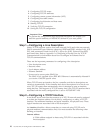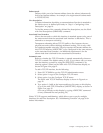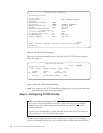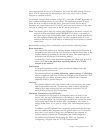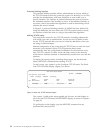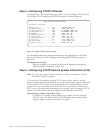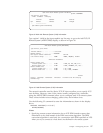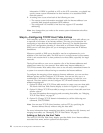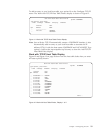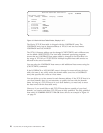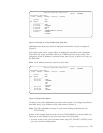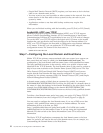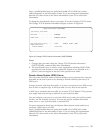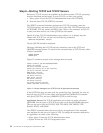information. If DDN is specified as *YES on the X.25 connection, you should not
specify remote system information for that interface or its associated DDN
network systems.
2. A routing error occurs when both of the following are true:
v The remote system information associated with the Internet address is an
extended data terminal equipment (DTE) address.
v The configured X.25 interface’s line does not support X.25 extended
addressing.
Note: Any changes that you make to the remote system information take effect
immediately.
Step 6—Configuring TCP/IP Host Table Entries
Each computer system in your network is called a host. The host table allows you
to associate a host name to an Internet address. This step gives instruction for
configuring a host table and host table entries. However, you should determine
early in the configuration planning if a host table or a Domain Name System
(DNS) server is the best option for you in managing host name and IP address
translations.
Whenever possible, a DNS server should be used as a replacement for, or in
addition to, the local host table. The DNS server is a single source for host names,
which is one reason that it is often preferred over host tables, especially for larger
networks.
The local host table on your server contains a list of the Internet addresses and
related host names for your network. Host tables map Internet addresses to
TCP/IP host names. Host tables allow users to use an easily remembered name for
a system in a network without having to remember the Internet address.
To configure the mapping of host names to Internet addresses, you can use three
different options on the Configure TCP/IP menu. You can use only one or a
combination of all three to obtain the host name processing you need for your
network. The three options on the Configure TCP/IP menu related to Internet
address mappings are:
1. Option 10 (Work with TCP/IP host table entries) to create your own host table.
The Work with Host Table Entries display is shown in Figure 11 on page 19.
2. Option 11 (Merge TCP/IP host table) to merge or convert a host table sent from
another system.
For more information about merging and converting host tables, see “Merging
TCP/IP Host Tables” on page 52.
3. Option 12 (Change TCP/IP domain information) to call the following new
command, CHGTCPDMN.
Note: You can start TCP/IP client functions, such as FTP, by specifying the
Internet address directly without using the host table.
For more information about managing host tables, including host file formats, and
merging host tables, see “Managing TCP/IP Host Tables” on page 51.
Adding an Entry to the Host Table
The Add TCP/IP Host Table Entry display provides fields for an Internet address,
associated host name, and an optional text description.
18 OS/400 TCP/IP Configuration and Reference V5R1



